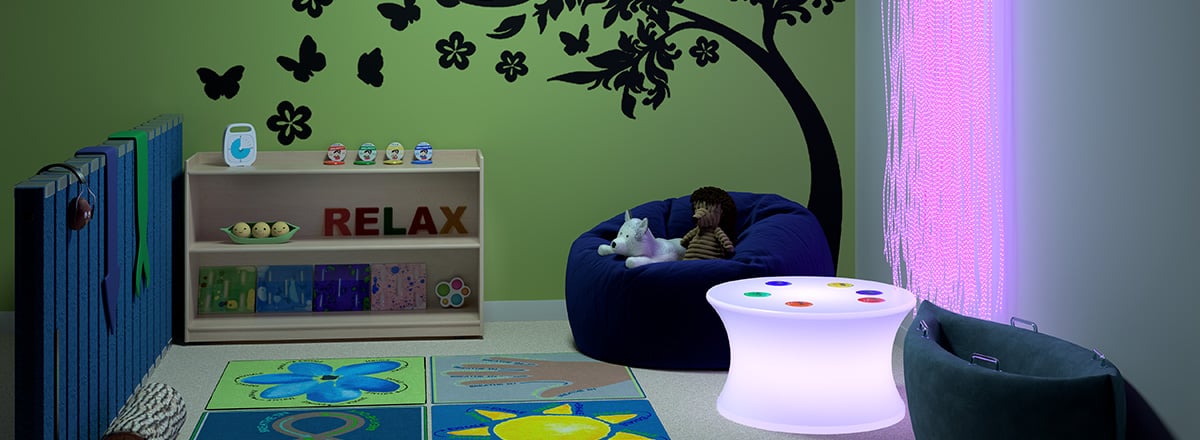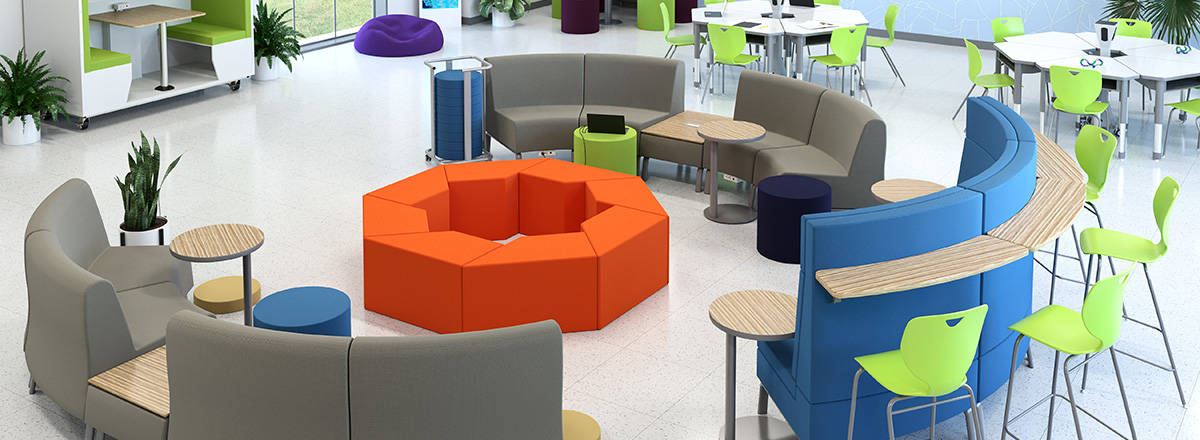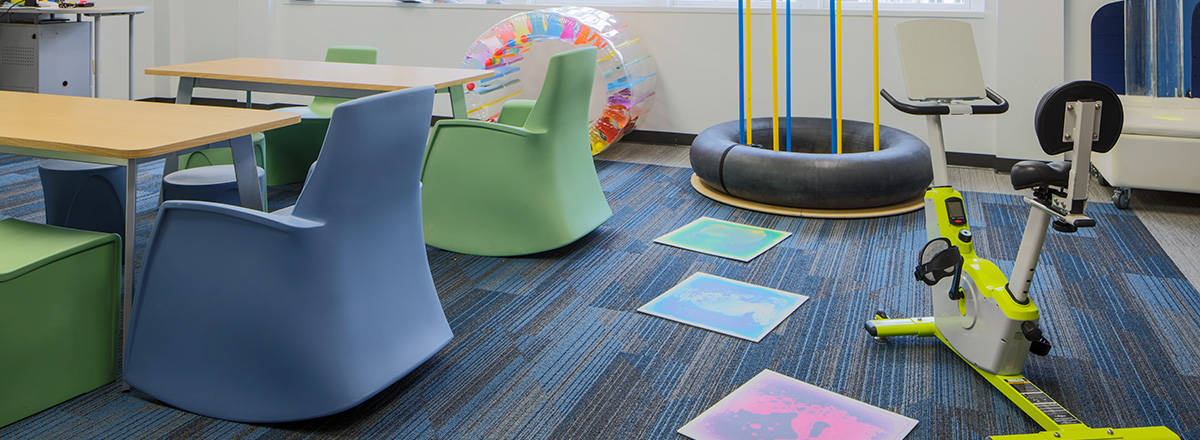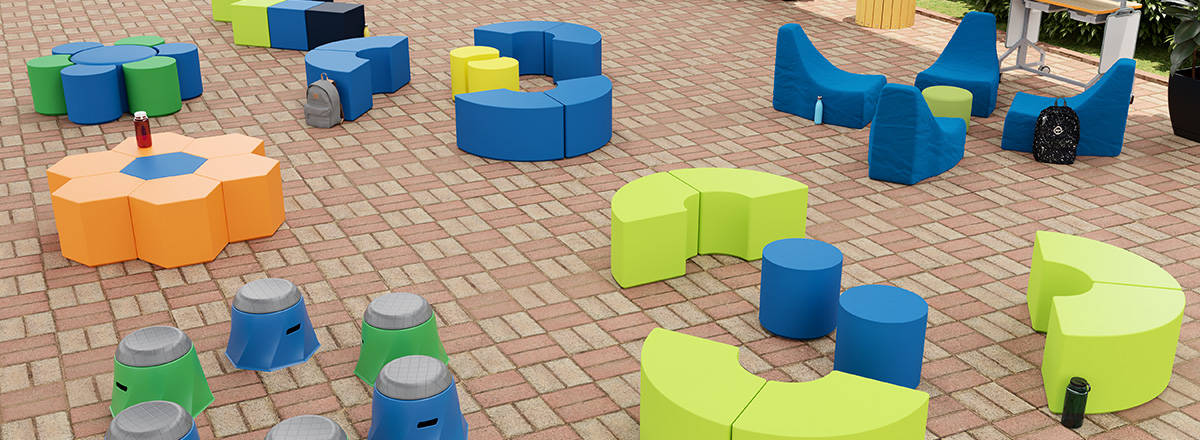Many students regularly deal with anxiety, depression, and other mental health challenges. The isolation and adversity students often experience have elevated this problem to a full-blown crisis, and K-12 leaders are looking for strategies that can help.

More than 75 percent of K-12 leaders surveyed last year said their teachers and staff have voiced concerns about student anxiety, depression, and trauma, the Washington Post reports.1 Seventy percent of US public schools taking part in the School Pulse Panel, an ongoing study sponsored by the National Center for Education Statistics, have reported an increase in the percentage of students seeking mental health services at school.2
These figures are alarming, but there are steps that K-12 leaders can take to improve students’ mental health and wellness. For instance, the design of a learning environment can have a big effect on students’ social and emotional well-being.
When students feel connected to their school, they’re less likely to experience poor mental health, according to the Centers for Disease Control and Prevention (CDC)3—and a well-designed classroom environment can help foster this sense of connectedness.
What the research says
Studies have identified a number of critical factors in helping students feel connected to their school, which in turn improves their mental health. These factors include:
Belonging
Students who are actively engaged in school are four and a half times more likely to be hopeful about their future, the Gallup Student Poll reveals, and belonging—which Gallup defines as when students “feel accepted and included” as part of the school community—is an essential element of connectedness and engagement.4
Comfort and Security
When students are both physically comfortable and emotionally secure, they feel more at ease. They can relax, block out negative thoughts, and focus more effectively on instruction. This is especially true for students who have anxiety or sensory processing disorders.

Social Connection
Citing research, the CDC observes: “Students who report feeling connected to, supported by, and respected by their peers demonstrate higher levels of engagement in school and report feeling more connected to their school.” Students reported higher levels of connectedness when they got to know each other well in class, the agency says.5
Autonomy and Choice
Student autonomy and empowerment are also key factors in supporting a sense of connectedness. “When students feel their teachers are open to their ideas and allow them to make choices regarding their learning, …they are more engaged in school, less disruptive in class, and report feeling a stronger sense of belonging and connectedness to their school,” the CDC says, and it points to research supporting this assertion.6
How the learning environment can help
Teachers can do many things to promote a sense of connectedness in their classroom. For instance, they can help make students feel safe and secure by clearly communicating the rules, enforcing them fairly and consistently, and addressing problematic behavior when it occurs. They can foster social connections by giving students opportunities to work together on projects and assignments. They can promote autonomy by giving students a say in class policies and assignments.
How learning spaces are designed and equipped also plays a key role in establishing connectedness. Here are four important strategies for designing and furnishing classrooms and other learning spaces that support student wellness.
Give students plenty of choices in seating styles
Providing a variety of seating options—including not only traditional desks or tables but also fidget or wobble stools, beanbag chairs and other soft seating options, bistro-style chairs and tables, and even standing desks—empowers students to choose an option that works best for them. It helps every student feel welcome and included, and it enables students to find the place where they’re most comfortable within the classroom. This can help students relax, overcome anxiety, and focus on learning.

Designed and furnished by School Specialty and Projects By Design.
Include options that help students regulate their emotions
Self-management is one of the five core competencies of social emotional learning, according to the Collaborative for Academic, Social, and Emotional Learning (CASEL). Self-management is the ability to manage one’s emotions, thoughts, and behaviors effectively in different situations, including the ability to manage stress—and furniture that allows students to stretch, rock, and move can help with this self-regulation.
For instance, self-soothing furniture such as the Classroom Select NeoRok NoRok Stool, a sturdy non-rocking option that provides grounded stability yet still gives students the space to move, fidget, or stretch their arms and legs, can help students effectively manage their behavior, while classroom options such as EcoWise Hand Therapy Fruit Squish Balls can also help students relieve stress.
Use highly flexible and easily movable furniture
Flexible learning environments with movable furniture that can easily be configured to support various group sizes and activities make it simple for students to work together to complete group tasks and projects—which can foster stronger social connections.
In one study from Australia, “students found that they developed high-quality relationships with their peers because of increased opportunities for group work and collaboration” within flexible learning environments, researchers wrote. They quoted one student as saying: “I think I’ve made more friends with the group work. I know we’ve been in the same school for about three years but, with the group work, you become a bit closer.”7
Look for opportunities to incorporate the outdoors
Outdoor learning has gotten a huge boost as K-12 leaders have sought to protect students and staff during the pandemic. But there are significant benefits to learning outdoors that go beyond physical health. In fact, learning outside has been shown to reduce stress and improve students’ emotional well-being.8

When designing outdoor learning spaces, use weather-resistant materials that can withstand the elements. For instance, the Out2Learn™ Large Outdoor Curved Seat Bench from Classroom Select has a cover made from machine-washable, soft canvas fabric that is water, mildew, stain, and fade resistant. Also, think about mobility: Do you want students to be able to move outdoor tables or furniture? If not, consider anchoring tables and using attached seating.
Supporting students’ mental and emotional health
Students can’t learn effectively if they’re anxious, depressed, or struggling with another mental health challenge. As K-12 leaders look for strategies to enhance student wellness and overcome the effects of trauma in students’ lives, learning space design should play a key role in these efforts. Creating learning environments that promote choice, comfort, connection, and inclusivity can help advance student well-being and lead to deeper engagement in learning.
Dr. Sue Ann Highland
Sue Ann Highland, PhD, is the National Education Strategist for School Specialty. She has more than 25 years of experience as an educator, administrator, and consultant with school systems across the United States, with broad expertise in designing and creating highly effective learning environments.
Read more by Dr. Sue Ann Highland–>
Works Cited
- Donna St. George and Valerie Strauss, “The crisis of student mental health is much vaster than we realize,” The Washington Post, Dec. 5, 2022,
- Education Writers Association, “The Student Mental Health Crisis: Resources for Reporters,” Oct. 14, 2022
- Centers for Disease Control and Prevention (CDC), “School Connectedness,”
- Gallup, “How to Improve Student and Educator Wellbeing,”
- CDC, “Peer Connection & Support,”
- CDC, “Student Autonomy & Empowerment,”
- Kariippanon et al., “Perceived interplay between flexible learning spaces and teaching, learning and student wellbeing,” Learning Environments Research, Oct. 2018,
- Gwen Dewar, “Outdoor learning and green time: How kids benefit from learning and playing in nature,” Parenting Science, 2019,







Leave a Reply